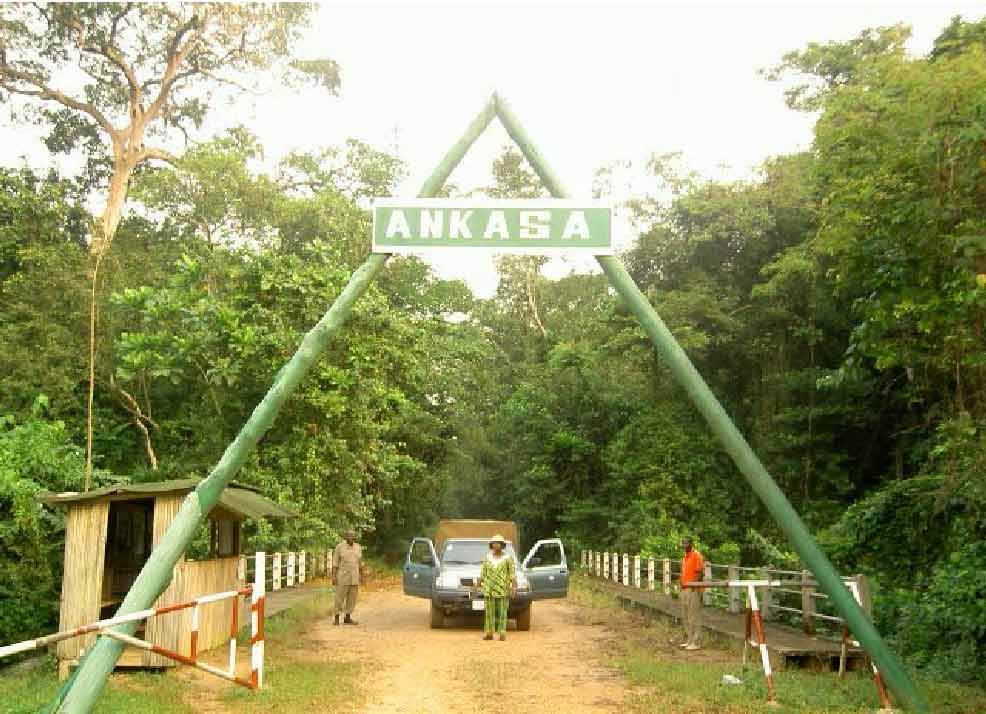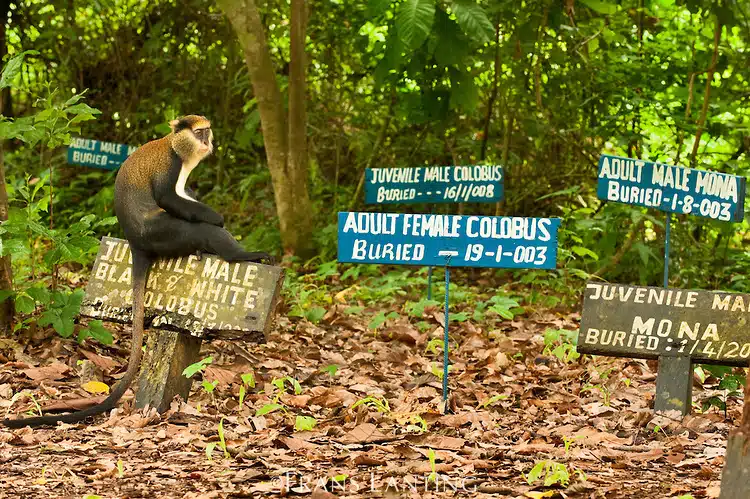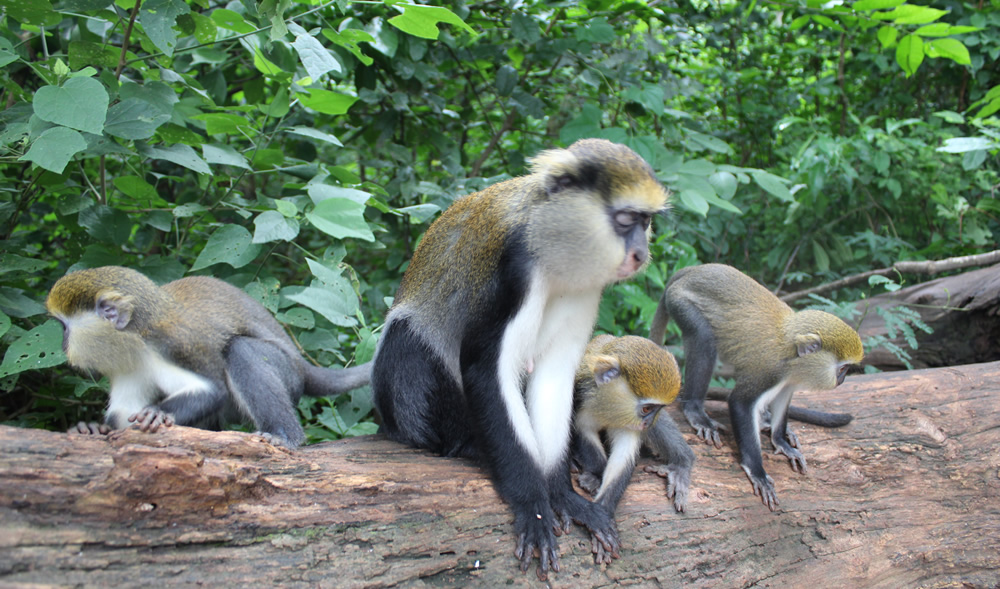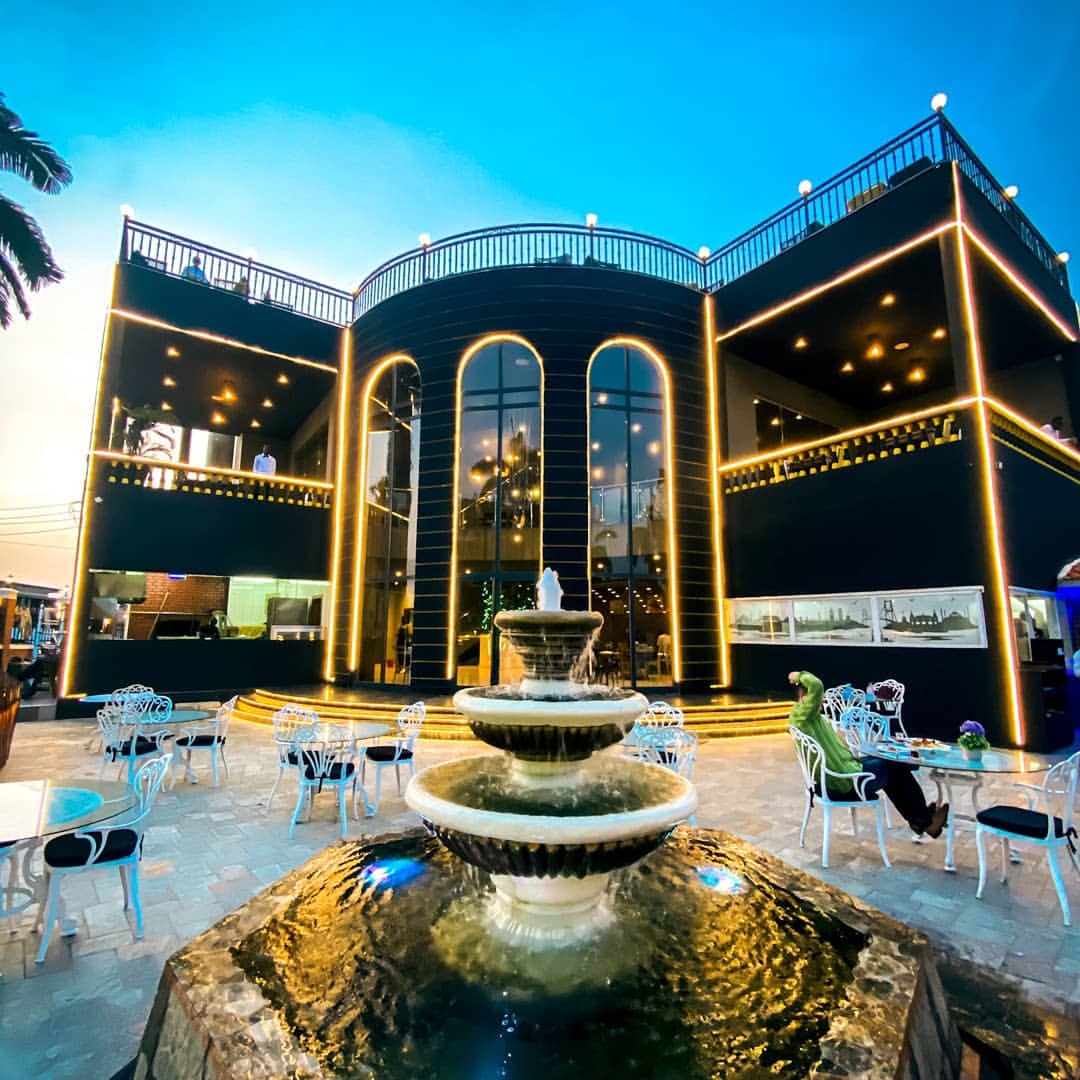Ankasa Conservation Area and Boabeng-Fiema Monkey Sanctuary: Exploring Ghana’s Rich Rainforest Reserve
In the southwestern corner of Ghana, the Ankasa Conservation Area stands as a testament to the country’s commitment to preserving its rich biodiversity. Spanning over 500 square kilometers, this protected area is a haven for diverse flora and fauna, offering a unique and immersive experience for nature enthusiasts and conservationists alike. In this article, let’s explore the wonders of the Ankasa Conservation Area and understand its significance in the realm of environmental preservation.
Location and Landscape:
The Ankasa Conservation Area is located in the Western Region of Ghana, near the border with Côte d’Ivoire. It encompasses the Ankasa Forest Reserve, Nini-Suhien National Park, and other forest areas. The landscape is characterized by lush rainforests, pristine rivers, and diverse ecosystems that support a wide array of plant and animal species.

Biodiversity:
One of the key features of the Ankasa Conservation Area is its remarkable biodiversity. The rainforests within the area are home to numerous species of flora, including rare and endemic plants. The diverse vegetation ranges from towering hardwood trees to intricate ferns and orchids, creating a visually stunning and ecologically vital environment.
The fauna of Ankasa is equally impressive. The area is a hotspot for birdwatchers, with over 300 species of birds recorded, including the vibrant African grey parrot and the elusive white-breasted guinea fowl. Mammals such as forest elephants, chimpanzees, and various monkey species inhabit the forests, adding to the richness of the region’s wildlife.
Conservation and Protection:
Established in 1992, the Ankasa Conservation Area aims to protect the unique ecosystems within its boundaries. The conservation efforts focus on sustainable practices that balance the needs of the local communities with the imperative of preserving the natural heritage. Community engagement and education play pivotal roles in ensuring the long-term success of conservation initiatives.

Visitor Experience:
For those seeking an immersive encounter with nature, the Ankasa Conservation Area offers a range of activities. Guided hiking trails provide opportunities to explore the diverse landscapes, discover hidden waterfalls, and encounter the rich wildlife. Birdwatching excursions allow enthusiasts to spot both resident and migratory bird species in their natural habitat.
The serene and pristine Amansuri Conservation Island, located within the Ankasa Conservation Area, provides a tranquil retreat. Visitors can enjoy boat rides along the Amansuri River, explore the island’s mangroves, and witness the convergence of river and ocean ecosystems.

Challenges and Conservation Efforts:
Like many protected areas around the world, Ankasa faces challenges such as illegal logging, poaching, and encroachment. Conservation organizations and local authorities are actively involved in monitoring and addressing these threats. Sustainable forestry practices, community empowerment, and ecotourism initiatives contribute to the ongoing conservation efforts.
Conclusion:
The Ankasa Conservation Area stands as a vital sanctuary for Ghana’s natural heritage. Its commitment to preserving biodiversity, engaging local communities, and providing a platform for sustainable tourism exemplifies a holistic approach to conservation. As visitors tread lightly through its lush forests and vibrant ecosystems, they become part of a collective effort to ensure that the wonders of Ankasa endure for generations to come.
Boabeng-Fiema Monkey Sanctuary:
Situated in the Brong-Ahafo Region of Ghana, the Boabeng-Fiema Monkey Sanctuary stands as a testament to the country’s commitment to wildlife conservation. This unique sanctuary is renowned for its efforts in protecting and preserving two monkey species, the Geoffroy’s Pied Colobus (Colobus vellerosus) and the Lowe’s Mona Monkey (Cercopithecus campbelli lowei). Join us on a journey to explore the rich biodiversity and conservation initiatives that make Boabeng-Fiema Monkey Sanctuary a must-visit destination for nature enthusiasts.
Location and Landscape:
Boabeng-Fiema Monkey Sanctuary is situated near the towns of Boabeng and Fiema in the Nkoranza North District. The sanctuary spans approximately 4.3 square kilometers and encompasses a mosaic of lush tropical forests, riverine habitats, and sacred groves. This diverse landscape provides a haven for a variety of wildlife, with monkeys taking center stage in the conservation efforts.
Primate Species:
The sanctuary is home to two main primate species, each contributing to the biodiversity of the region:
- Geoffroy’s Pied Colobus: Identified by their striking black and white fur, Geoffroy’s Pied Colobus monkeys are an Old World monkey species. They thrive in the canopies of the sanctuary’s forests, displaying agility and social behaviors that captivate visitors.
- Lowe’s Mona Monkey: Characterized by their chestnut-brown fur and white ruffs, Lowe’s Mona Monkeys are an arboreal species commonly found in the forests of West Africa. Their acrobatic antics and social structures make them a delight to observe.
Cultural Significance:
Beyond its role in wildlife conservation, Boabeng-Fiema Monkey Sanctuary holds cultural significance for the local communities. The monkeys are considered sacred, and legend has it that harming these creatures brings misfortune. The coexistence of humans and monkeys in the sanctuary reflects a harmonious relationship that is deeply rooted in local traditions.

Conservation Initiatives:
The sanctuary is managed by the Wildlife Division of the Forestry Commission of Ghana, with support from local communities. Conservation efforts include:
- Community Engagement: Local communities actively participate in the conservation programs, recognizing the importance of preserving their natural heritage.
- Education and Awareness: The sanctuary conducts educational programs to raise awareness about the monkeys’ ecological importance and the need for conservation.
- Tourism for Conservation: Responsible tourism plays a vital role in generating funds for ongoing conservation projects. Visitors contribute to the local economy while supporting primate protection efforts.
Visitor Experience:
Visitors to Boabeng-Fiema Monkey Sanctuary can enjoy a range of activities:
- Monkey Viewing: Guided tours provide opportunities to observe and photograph the monkeys in their natural habitat.
- Nature Walks: Explore the sanctuary’s trails, discovering diverse plant and animal species.
- Cultural Interactions: Engage with local communities to gain insights into the cultural significance of the monkeys.
- Conservation Center: Learn more about the sanctuary’s conservation initiatives at the visitor center.

Preserving Ghana’s Natural Heritage:
Boabeng-Fiema Monkey Sanctuary exemplifies Ghana’s dedication to preserving its rich biodiversity while fostering a harmonious relationship between humans and wildlife. Through community involvement, educational outreach, and sustainable tourism, the sanctuary stands as a model for effective primate conservation in West Africa. As you traverse the trails of Boabeng-Fiema, you not only witness the playful antics of monkeys but also become part of a collective effort to protect and cherish Ghana’s natural heritage.


